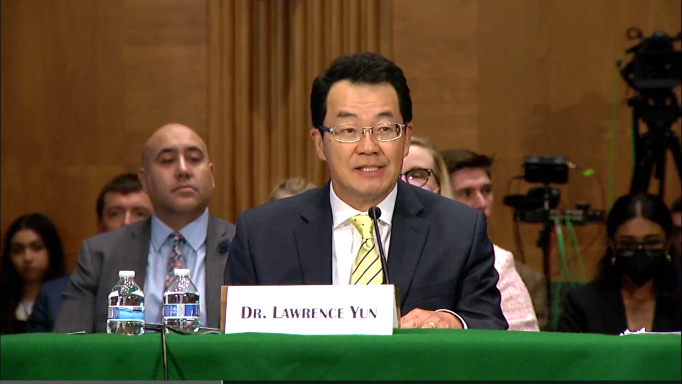
NAR Chief Economist: Nationwide Home Price Decline Won't Happen Soon

Lack of inventory continues to support growth in prices, which have increased year over year for 124 straight months.
Despite signs that the growth in home prices is beginning to slow, a nationwide decline in prices will not happen anytime soon.
That’s the opinion Lawrence Yun, chief economist for the National Association of Realtors, shared with Congress on Thursday.
In both written remarks provided ahead of time and in testimony before the U.S. Senate Committee on Banking, Housing, and Urban Affairs during a hearing entitled, “Priced Out: The State of Housing in America,” Yun said the potential for weaker sales should increase available inventory in some markets, but not enough to affect persistent affordability constraints which, for many Americans, have kept homeownership out of reach.
"In the near term, I do not expect the situation to change appreciably," Yun said Thursday. "Historic undersupply in the market, combined with continued demand, will likely drive ongoing issues with affordability for many Americans.
"Any short-term price adjustments, if they occur, will be less consequential compared to the immense longer-term housing affordability challenges we face as a country."
Thursday's hearing comes amid a nationwide shortage of housing for sale. According to NAR, by January and February of this year only 850,000 homes were listed on the market. By comparison, 1.5 million homes were listed in the same months before the pandemic in 2020, “which at that time was considered tight,” Yun said.
In fact, he said, a lack of inventory is not a new phenomenon, telling the committee that, "even before the pandemic, NAR estimated ... a nearly 5 (million) to 6 million housing-unit deficit in relation to population and job growth in the country."
The months’ supply of inventory — which measures the market’s tightness by capturing how many months it would take to exhaust the inventory at the current sales pace — hit an all-time low of 1.6 months at the beginning of 2022, he said.
“A healthy market is considered to be about 4 to 5 months of supply because, at that level, home prices and income generally rise by roughly the same percentage.”
One result of the lack of inventory is that it has helped sustain year-over-year price growth for a record 124 consecutive months as of June, when the median home price set a new record reaching $416,000 — up 13.4% from a year earlier.
A study of other circumstances in the market is also compelling, Yun said, given COVID's impact on U.S. housing and recent, dramatic increases in mortgage interest rates.
"When the Federal Reserve essentially went all-in in the early months of the pandemic … the decline in mortgage rates and the cautious reopening of the economy boosted housing demand," said Yun, who also serves as NAR's senior vice president of research. "The housing market always responds to changes in mortgage rates."
Interest rates, which had been consistently in the 4%-to-5% range in the decade preceding the pandemic, hovered near record lows around 3% throughout much of 2020 and 2021. NAR's most recent existing-home sales report, however, found that the average commitment rate for a 30-year, conventional, fixed-rate mortgage in June was up to 5.52%.
"Any increases in available inventory observed over the first half of this year have been offset by the corresponding increases in consumer costs," Yun said, explaining that rate increases of roughly 2.5 percentage points have added about $800 per month to a median-priced house mortgage payment.
He added that NAR’s research indicates that a buyer would need an income of about $125,000 to afford most of the homes on the market.
"This affordability crunch is felt most acutely as we move down the income scale and by minority households, given the current income distribution in America," Yun said. "That is why housing supply must be addressed to moderate home price and rent gains."
The National Association of Realtors is the largest trade association in the U.S., representing more than 1.5 million members involved in all aspects of the residential and commercial real estate industries.




